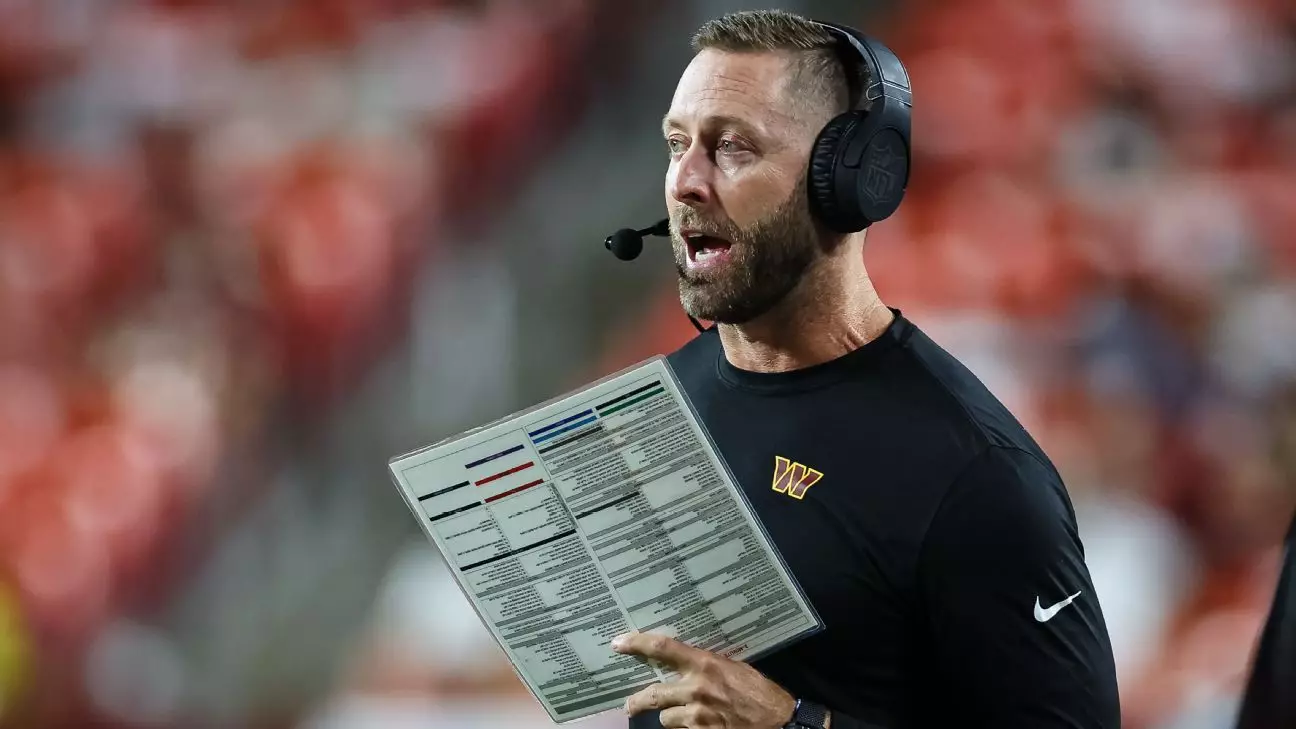In the highly competitive landscape of professional football, team cohesion and timing often determine the difference between victory and defeat. For the Washington Commanders, a promising offensive season currently hangs in the balance, largely due to unforeseen absences and injuries that hinder their ability to develop chemistry. The absence of key players like wide receiver Terry McLaurin, injured guards, and other contributors has hampered the team’s offensive growth during the crucial preseason period. While these setbacks are common in training camps, they expose deeper vulnerabilities in team development, especially when the season looms just weeks away.
The core issue lies in the lack of on-field collaboration. McLaurin’s injury, which limits his participation to training room work rather than live scrimmages, deprives quarterback Jayden Daniels of his primary target’s immediate influence. Similarly, the absence of other critical players like Noah Brown and the injured guards hampers the offensive line’s ability to gel, leading to inconsistent blocking and timing. Without the full complement of starters on the field, the Commanders are essentially practicing in fragmented units, making it nearly impossible to assess how well their offensive schemes will function in real game scenarios.
This creates a significant challenge for offensive coordinator Kliff Kingsbury, who emphasizes that true understanding and rhythm only emerge through on-field repetitions and organic connections. While the team boasts impressive statistical rankings from last season and high-profile additions like Deebo Samuel and Laremy Tunsil, these offseason acquisitions have yet to translate into a cohesive unit in preseason. The “work in progress” narrative sounds optimistic, but in reality, it underscores a pressing need for synchronized execution rather than mere personnel upgrades.
The Significance of Building Chemistry in a Short Span
Football is undeniably a sport driven by chemistry, timing, and trust—components that are cultivated through consistent practice against live defenses. The Commanders’ approach of adding talent via trades and drafts demonstrates their ambition to elevate their offensive potency. However, football’s art isn’t just about individual talent; it’s about how well players operate as a unit. The incomplete participation of vital players means that Kingsbury’s offense remains an untested puzzle, where critical pieces are missing, and the picture remains blurry.
Jayden Daniels and Terry McLaurin developed a connection last season, culminating in a remarkable 13 touchdown receptions from McLaurin—the second-highest in the NFL. Their chemistry was a testament to their combined work ethic and familiarity with each other’s tendencies. But as Kingsbury rightly points out, last year’s experience won’t automatically translate to instant success this season, especially without enough live reps. Investment in time and repetitions on the grass becomes even more necessary when the team is reassembled with new personnel and personnel missing.
Furthermore, the timing and rhythm shared between quarterback and receiver aren’t solely about catching passes and running routes—they are about understanding each other’s nuances, reading defensive coverages, and adjusting on the fly. Missing out on this crucial phase of development means that the Commanders could enter the season with a disjointed offense, vulnerable to early-game stumbles and miscommunications.
The Path Forward: Patience, Practice, and Precision
Despite the setbacks, there remains a window of opportunity for the Commanders to turn their preseason struggles into season-long strength. The key lies in prioritizing quality repetitions and fostering authentic relationships on the field. Kingsbury’s approach to focusing on “time on task” resonates, especially with players like Daniels and McLaurin, who have already built rapport last year. The foundation of their partnership provides a head start, but it must be reinforced through consistent practice and resilience.
The coaching staff’s challenge is to maximize the limited practice time while managing player health. With the season looming, integrating new players and developing on-field chemistry with incomplete units demands creativity and strategic planning. The team must utilize situational drills, mini-camps, and scrimmages to accelerate their synchronization. It’s about engineering opportunities that mimic game scenarios, allowing players to develop instincts and trust under pressure.
Ultimately, the success of the Commanders’ offense in 2023 boils down to whether they can overcome the initial hurdles caused by injuries and absences. It’s not just about tactical schemes but the ability to adapt, learn, and forge connections quickly. While these early issues are concerning, they also serve as a stark reminder that football is as much about perseverance and chemistry as it is about talent—an insight that could define the Commanders’ season, for better or worse.

